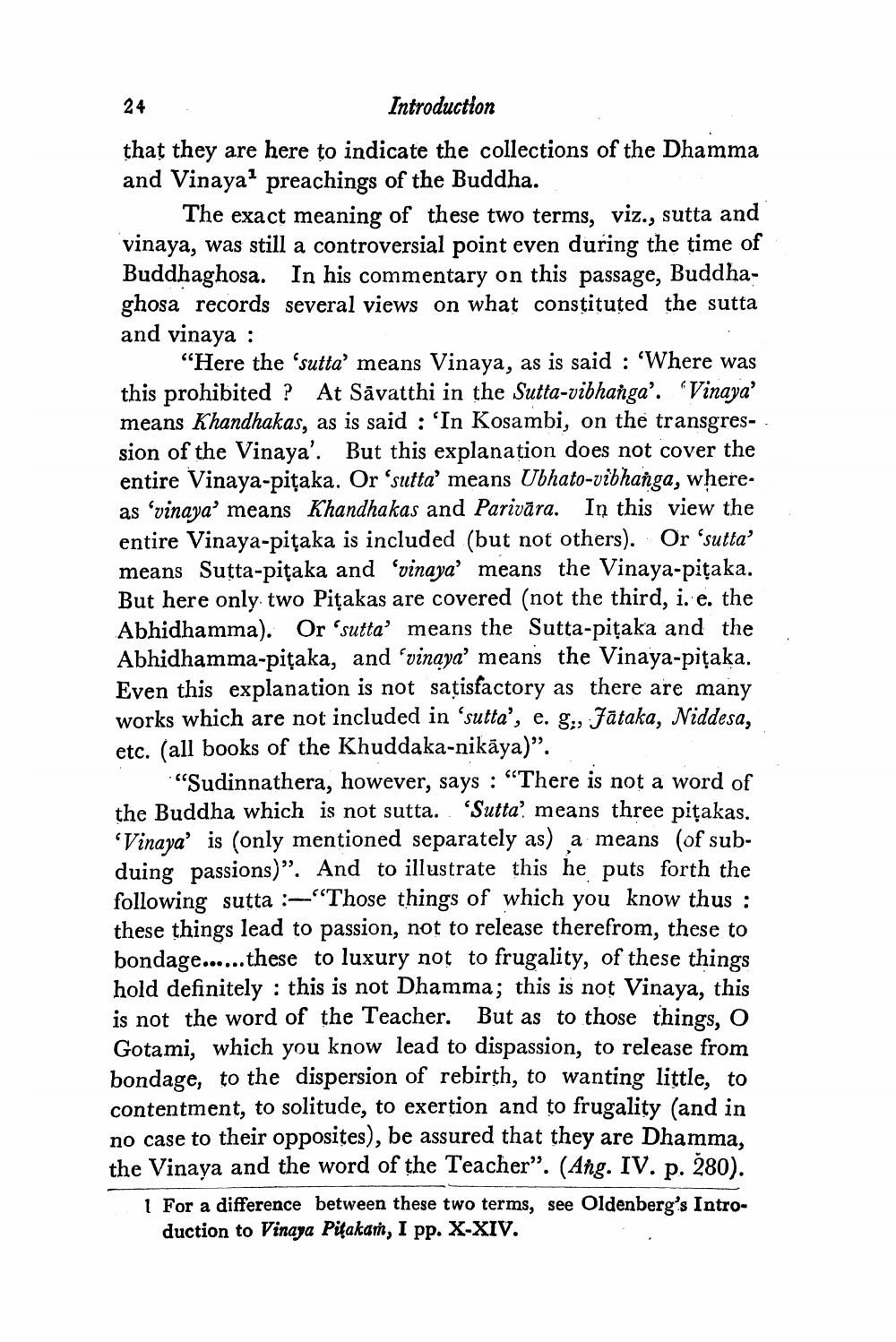________________ 24 Introduction that they are here to indicate the collections of the Dhamma and Vinaya? preachings of the Buddha. The exact meaning of these two terms, viz., sutta and vinaya, was still a controversial point even during the time of Buddhaghosa. In his commentary on this passage, Buddhaghosa records several views on what constituted the sutta and vinaya : "Here the 'sutta' means Vinaya, as is said : 'Where was this prohibited ? At Savatthi in the Sutta-vibhanga'. Vinaya' means Khandhakas, as is said : 'In Kosambi, on the transgression of the Vinaya'. But this explanation does not cover the entire Vinaya-pitaka. Or 'sutta' means Ubhato-vibhanga, whereas 'vinaya' means Khandhakas and Parivara. In this view the entire Vinaya-pitaka is included (but not others). Or 'sutta' means Sutta-pitaka and 'vinaya' means the Vinaya-pitaka. But here only two Pitakas are covered (not the third, i.e. the Abhidhamma). Or "sutta' means the Sutta-pitaka and the Abhidhamma-pitaka, and 'vinaya' means the Vinaya-pitaka. Even this explanation is not satisfactory as there are many works which are not included in 'sutta', e. g, Jataka, Niddesa, etc. (all books of the Khuddaka-nikaya)". "Sudinnathera, however, says : "There is not a word of the Buddha which is not sutta. Sutta' means three pitakas. 'Vinaya' is (only mentioned separately as) a means (of subduing passions)". And to illustrate this he puts forth the following sutta :-"Those things of which you know thus : these things lead to passion, not to release therefrom, these to bondage......these to luxury not to frugality, of these things hold definitely : this is not Dhamma; this is not Vinaya, this is not the word of the Teacher. But as to those things, O Gotami, which you know lead to dispassion, to release from bondage, to the dispersion of rebirth, to wanting little, to contentment, to solitude, to exertion and to frugality (and in no case to their opposites), be assured that they are Dhamma, the Vinaya and the word of the Teacher". (Ang. IV. p. 280). 1 For a difference between these two terms, see Oldenberg's Intro duction to Vinaya Pitakan, I pp. X-XIV.




